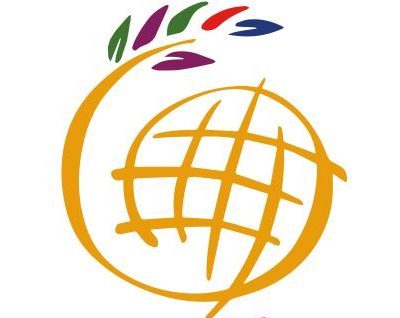The sad news
Prior to the land reform programme in Zimbabwe, export growth in the horticulture sector was very impressive, and was in fact the fastest growing agricultural sector in Zimbabwe. Sadly, not long thereafter, despite the availability of good soils, adequate land (4 ha), water resources and well-lined irrigation canals at Masembura Garden some 30km South of Bindura, 20 young farmers who used to grow horticultural crops have stopped operations. They cited lack of knowledge on how to grow, process, market and add value to their produce.
These young farmers said they lack improved seed varieties, access to loans and appropriate and adequate training and extension support. Regrettably, they failed to supply the yield and quality required by emerging lucrative markets. Rumor has it that they were highly unorganized, lacked cohesion and skills to negotiate better deals and thus sold produce with limited value addition at very low prices.
New developments
Horticulture is emerging as one of the agricultural enterprises with the most potential to accelerate the growth of any economy across the globe. Its role on food and nutritional security, poverty alleviation and employment generation is becoming increasingly important.
The good news
I am Witness Nezandonyi, a young man who was born 33 years ago in Chimanimani, a peasant district in Southeast Zimbabwe. After graduating with a B.Sc. in Agriculture in 2008, I have since been working as an agronomist for the Ministry of Agriculture.
The good news is that once funded by the Youth Agripreneurs Project (YAP), I am keen to support young farmers by providing improved seed varieties, fertilisers and basic tools as well as hands-on training in horticulture production, processing, marketing, value addition and business management. I am confident that productivity will be enhanced, income generation will increase, employment will be created, and food and nutrition security enhanced not only in the community but the country at large.
My motivation
It’s not just my background of leading successful agricultural programmes and projects, but my passion for agriculture, food security and rural development that make me crave for more projects that assist rural communities like Masembura. This project offers not only a wide range of options to young farmers for crop diversification, but also provides ample scope for sustaining large number of agroindustries, which can generate huge employment opportunities.
How I will achieve the goal
I will organize the 20 young farmers mentioned above, brief them and then provide them with the required inputs (improved seeds, fertiliser and basic tools). Subsequently, I will train them in horticulture production, processing, marketing and value addition to meet the demand and quality of emerging opportunities. The best young farmers will be awarded to stimulate competition and production.
The stage is set!
With the help of local community leaders, mobilisation of the young farmers to identify major challenges, opportunities and threats to the horticultural project have already been done. The topics to cover during trainings have also been identified and training materials prepared.
Measuring success
 Because there are currently no operations at Masembura Garden, resuming operations is the first step towards success. The production, processing, value addition and sale of high quality, safe and adequate horticultural produce for the market will be a plus. Surplus produce will be used for family consumption, thus improving day to day diet and nutrition. Through well-kept records of income generated versus the costs of production, we will get a smile when profits are made.
Because there are currently no operations at Masembura Garden, resuming operations is the first step towards success. The production, processing, value addition and sale of high quality, safe and adequate horticultural produce for the market will be a plus. Surplus produce will be used for family consumption, thus improving day to day diet and nutrition. Through well-kept records of income generated versus the costs of production, we will get a smile when profits are made.
Improved managerial capacity and sustainability (continued operations) of the project after withdrawal of funding will allow us to tell the success story of a revitalized horticultural sector – the lost pride of Zimbabwe.
The million dollar PLAN for the USD $5000 grant
With funds from YAP, I will use:
USD $2500 to purchase inputs (improved seeds, agrochemicals and fertilisers), tools (hoes, knapsack sprayers, picks, garden folks, shovels and spades) and rehabilitate the dilapidated portions of the surrounding security fence. Timeframe: First 3 months.
USD $1000 to fund the hands on horticulture training (purchasing food, stationery, printing, allowances for trainers and protective clothing). Timeframe: 4 months.
USD $1000 for the look and learn tour of successful horticultural projects a week after hands-on training (bus hire, food, refreshments, stationery, accommodation). Timeframe: 2 days.
USD $500 for the prize of the best young horticultural producer to stimulate competition and improvement. Timeframe: After first successful harvest.
Blogpost and picture submitted by Witness Nezandonyi (Bindura, Zimbabwe) – captainneza[at]gmail.com
The content, structure and grammar is at the discretion of the author only.
This post is published as proposal #170 of “YAP” – our “Youth Agripreneur Project”.
The first selection of the winners will be based on the number of comments, likes and views each proposal gets.
As a reader, you can support this speaker’s entry:
- Leave a comment (question, suggestion,..) on this project in the comment field at the bottom of this page
- Support the post by clicking the “Like” button below (only possible for those with a WordPress.com account)
- Spread this post via your social media channels, using the hashtag: #GCARD3
Have a look at the other “YAP” proposals too!
As a donor, support young agripreneurs and sponsor this unique project. Check out the side column for our current sponsors.
“YAP” is part of the #GCARD3 process, the third Global Conference on Agricultural Research for Development.



